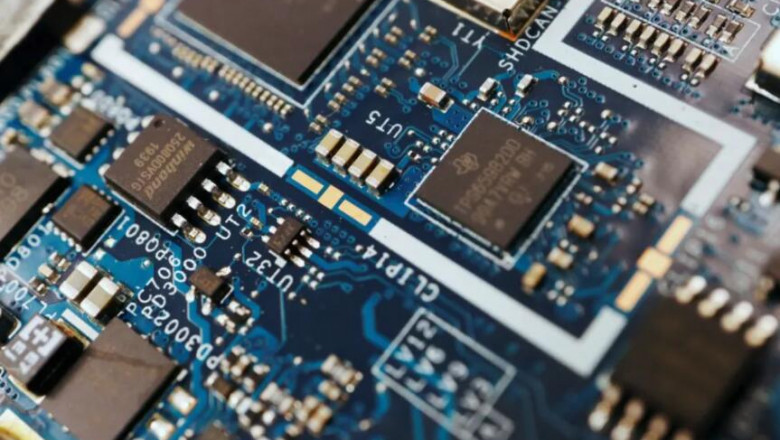views

The IC industry has a wide range of different research directions, including digital and analog, design, manufacturing, and packaging, as well as different chip fields such as FPGA and ASIC.
I have met many students who want to join the industry and switch to IC, they have the problem of "choose FPGA or ASIC". Distinguish the concept is often the premise of the choice, so first of all, we must clarify the concept of the two.
Clarify the concept
FPGA's full name is Field Programmable Gate Array, and the Chinese name is Field Programmable Gate Array, but in its essence, it is still a kind of chip.
Many people are not clear whether FPGA is considered software or hardware? In fact, it is between software and hardware. If it is used for interface and communication, it is biased towards hardware; if it is used for algorithm and control, then it is biased towards software.
For example, FPGAs have been used in the digital IC field to verify RTL code. Compared to emulators running simulations, FPGAs run much closer to the real chip.
ASIC's full name is Application-Specific Integrated Circuit, is a dedicated integrated circuit, is for some specific application needs, specific user requirements, and the need for a specific electronic system and the development of the design of the chip.
Many people hear ASIC will subconsciously and digital ICs to draw the same number, but in fact, regardless of digital, analog, or mixed digital and analog, any custom chip can be called ASIC.
Read more about FPGAs and ASIC:
Flexibility
FPGAs are more flexible than ASICs.
Chip flow is known to be very expensive, once the problem is the flow of failure. Especially for large-scale digital chips, the development process requires the verification team to spend a lot of effort on RTL code verification.
FPGA can change the chip's function at any time, even if it has been manufactured or even applied to the client, you can still modify the circuit structure, which can largely reduce the risk and cost.
And if the design itself does not need much flexibility, FPGA flexibility may be a waste and increase the potential cost.
Development Flow and Cycle Time
FPGA development time is short.
Generally speaking, FPGAs can be used directly after programming, and the development process can usually be completed in a few months, without the need to go through a six-month or even a year or more flow cycle.
ASICs, on the other hand, are more complex, especially for full custom designs, and require a lot of human and material resources for design development. The corresponding is a small size, low power consumption ...... The comprehensive performance of the chip is more resistant to fight.
Speed and performance
Both are the same process and design, FPGA performance than the ASIC gap.
Because the internal structure of the FPGA is universal, it can be different according to the needs of the implementation of multipliers, multiplexers and other combinational logic.
The internal structure of ASIC is fixed, multiplier is multiplier, so the generality of FPGA in the structure will lead to performance redundancy.
Cost Comparison
The cost depends on the quantity. If it is a small volume, FPGA cost is low. If it is high volume, ASIC cost is low.
When the usage is small, FPGAs are not required to pay millions or even tens of millions of flow costs (the bigger cost of FPGAs is the board), and the cost is lower. When the use of large quantities, the use of ASIC instead is a more low-cost and high-performance choice.
This is one of the reasons why many university projects are FPGAs.
Industry Status
The two largest FPGA companies in the industry are Xilinx (Xilinx) and Altera (Altera).
Altera was acquired by Intel in 2015, and the name Altera is rarely mentioned anymore. Xilinx, which is the leading company, was also successfully acquired by AMD in February of this year (2022).
The company has been promoting FPGA as the "all-purpose chip", and some people say that FPGA will replace ASIC. now see, all-purpose and replace is not to talk about, but FPGA with its advantages can also have a place in the industry.
But it must be said that the giant can not escape the fate of acquisition.
Entry difficulty
FPGA is easier to enter the industry.
You need to distinguish whether you are doing the design of the fpga itself, or design with fpga. The former threshold is very high, and in the state of the neck; the latter threshold is relatively lower than the asic to a little.
But most cases we are discussing FPGA belong to the latter: just based on the existing FPGA chip to do the back-end arrangement of the work content, rather than the design and manufacture of new FPGA chips, after all, the world can do this thing in a handful of companies.
How to choose
Many people will take the FPGA engineer and IC front-end engineer direct analogy, there will be a lot of people choose to switch from FPGA to IC front-end.
FPGA to IC front-end is indeed easier, after all to write Verilog, of course, this is only an optional direction, not a must.
In terms of digital IC, it and FPGA are considered to be a good direction.
The difficulty of FPGA is slightly lower to start will be fast, but will be limited by the development of technology, part of the work will be replaced by new tools, relatively speaking, will also encounter career bottlenecks more quickly. IC front-end positions are more, the entry threshold is higher, the technical difficulty is greater than FPGA, but on the long-term career development is more advantageous.
To put it simply: if you want to enter the industry quickly, you can choose FPGA, but if you pursue a higher ceiling, you can choose IC front-end.











